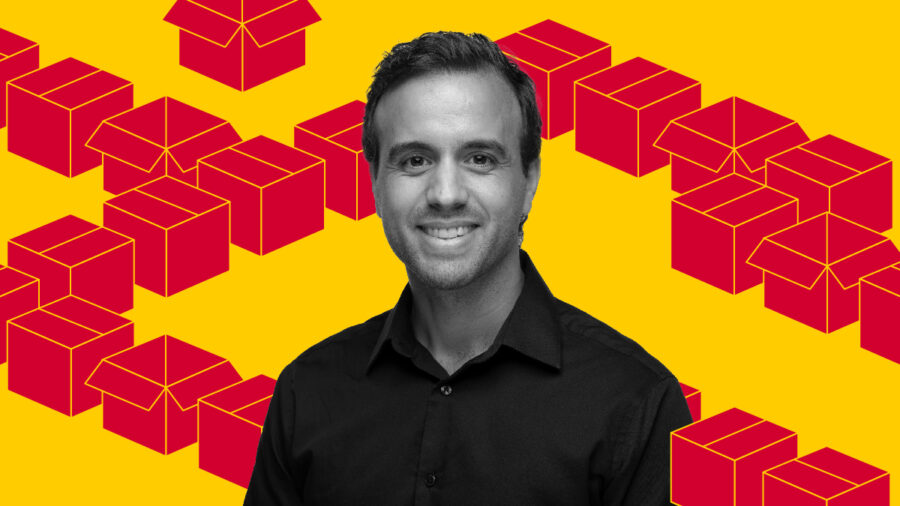
What has been your biggest leadership lesson from the last year?
In a more challenging macroeconomic environment, ensuring we are resilient as people and as leaders to keep motivating teams has been the biggest leadership lesson.
This time of uncertainty brings concerns and potential risks. People think about what it could mean in their lives and across the business. Not only professionally but also personally, in some cases. As a leadership team, it’s really important to show a unified message and be on the battlefield with our team members and with our customers.
I think it is always very important to stay close to the business as there are certain things that you need to understand in a high level of detail to be able to guide people effectively.
We’re also coming out of a period where a lot of people didn’t travel. Last year we went back to a lot more face-to-face work and business as usual. And so, being on the frontline with teams has been very important.
What are the biggest changes on the horizon in your industry?
I think there are two big evolutions. The first is that ecommerce as a whole area is forecasted to continue to grow. And this will continue to bring a need for organisations to continue to digitalise and go omnichannel. That notion of selling and being present across multiple channels is going to be critical for businesses.
The biggest growing channel we see right now is social commerce. I think we’re going to continue to see new platforms and players there. We also see a lot of discussions around cross-border ecommerce right now, with some of the larger fashion and apparel players out of China being pretty strong and entering new markets.
The second is the huge upside that’s still to come with applications of technology in ecommerce. We’re at the beginning of the possibilities with AI, and there is potential across the entire consumer journey, from attracting customers to returns.
For example, robotics and automation are a really important evolution in fulfilment. Everyone has been investing a lot in deploying new technologies, and many of these technologies are also enabled by AI and machine learning. We will continue to see that being a big contributor to improving the industry.
There is a threat to organisations that don’t embrace technology at the pace they should
What’s the biggest threat to your industry?
The logistics industry itself is very robust – we saw that in Covid with challenges operating during that time.
It’s not a threat to the whole industry, but there is a threat to organisations that don’t embrace technology at the pace they should. It’s not obvious yet, but in the next 10 years, you’re going to start to see a meaningful difference between those adopting technology at a faster pace and creating a significant competitive advantage as opposed to organisations that aren’t.
And this is not only logistic companies like us. It could be seaports, airports, airlines or any large stakeholder in the industry. Retailers and ecommerce brands could also be impacted by this.
Often when big trends are coming into the market, people get distracted. You shouldn’t focus on where the noise is but focus on where the opportunities are. It’s an important distinction because some people start with technology and then they try to look at applications. That’s not the best approach. You should be asking: what are some of the biggest opportunities or challenges? And then how do you improve that?
For example, we’ve been doing a lot of work around returns and reverse logistics. We’re doing this to help companies become more sustainable, more profitable and create a better consumer experience. When you think about these three things, it’s really what every single business in the world is and should be trying to do.
So then the question is: can technology improve this? For example, we’re working on projects about the predictability of returns, using AI and data analytics to look at the likelihood of a customer returning a product. You want to start with the biggest opportunity.
How do you inspire your team?
There are two things that I think are fundamental to good leadership. One is to be on the battlefield with them as I mentioned before.
The other one is around purpose. During Covid, many people realised logistics services are critical. We move essential products like medicines and food and we can have a huge positive impact across the globe. I worked in supply chain for 17 years and no one had ever asked me about what I do and how I do it at Saturday dinner until Covid. Suddenly, people had become curious.
If I go back to my earlier example around reverse logistics. Being able to deploy new capabilities in that space could mean a meaningful decrease in products in landfill because of the scale we operate on. We work with the largest companies in the world, we serve the largest companies in the world. So if we can influence them and the sustainability of their business, that goes way beyond moving products from A to B. I try to convey this message and get teams thinking about how the industry can help make the world a better place.
